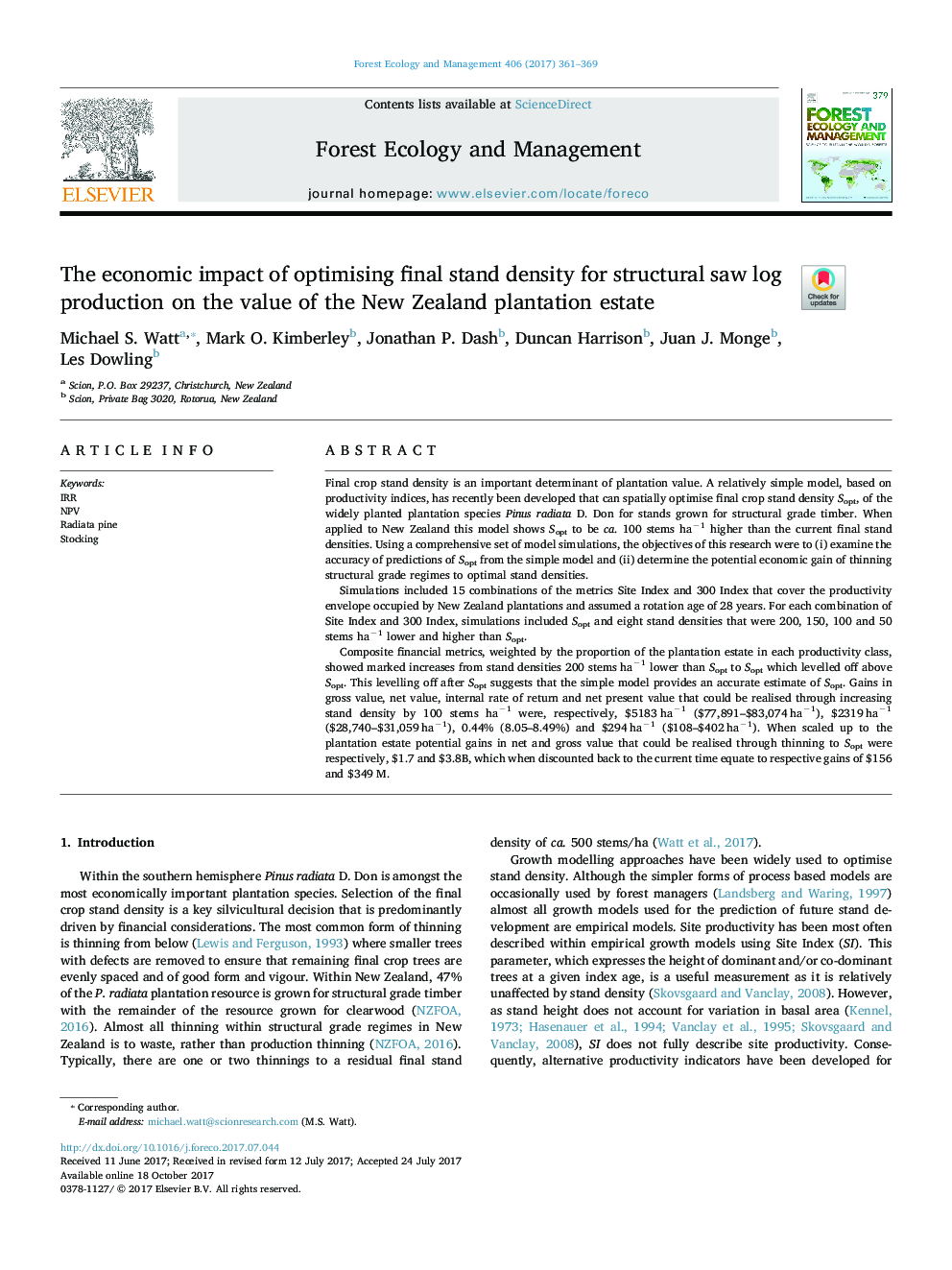| Article ID | Journal | Published Year | Pages | File Type |
|---|---|---|---|---|
| 6459031 | Forest Ecology and Management | 2017 | 9 Pages |
Abstract
Composite financial metrics, weighted by the proportion of the plantation estate in each productivity class, showed marked increases from stand densities 200 stems haâ1 lower than Sopt to Sopt which levelled off above Sopt. This levelling off after Sopt suggests that the simple model provides an accurate estimate of Sopt. Gains in gross value, net value, internal rate of return and net present value that could be realised through increasing stand density by 100 stems haâ1 were, respectively, $5183Â haâ1 ($77,891-$83,074Â haâ1), $2319Â haâ1 ($28,740-$31,059Â haâ1), 0.44% (8.05-8.49%) and $294Â haâ1 ($108-$402Â haâ1). When scaled up to the plantation estate potential gains in net and gross value that could be realised through thinning to Sopt were respectively, $1.7 and $3.8B, which when discounted back to the current time equate to respective gains of $156 and $349Â M.
Related Topics
Life Sciences
Agricultural and Biological Sciences
Ecology, Evolution, Behavior and Systematics
Authors
Michael S. Watt, Mark O. Kimberley, Jonathan P. Dash, Duncan Harrison, Juan J. Monge, Les Dowling,
